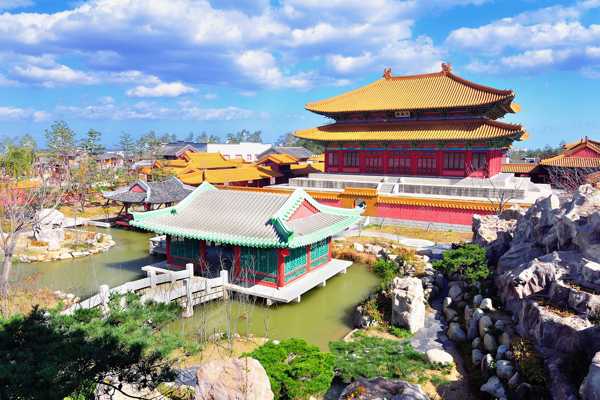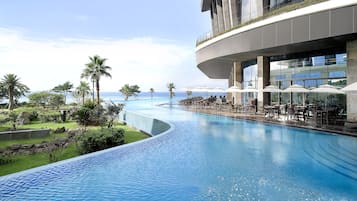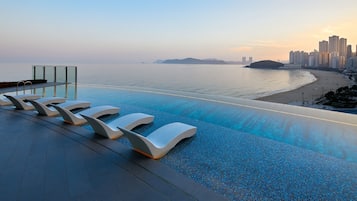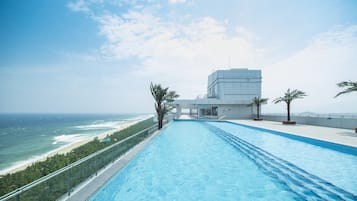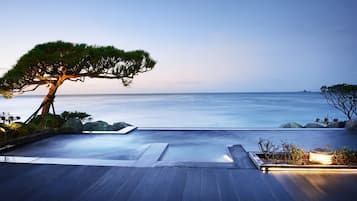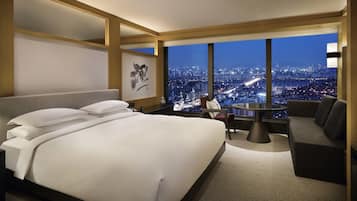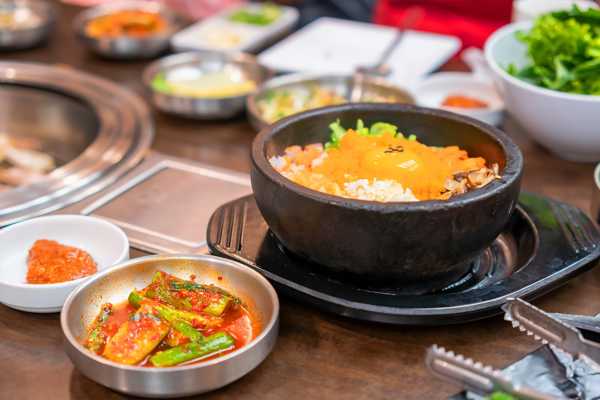Stopping by a traditional royal palace should be on your Korean itinerary, especially if you have an interest in architecture or history. Many of the palace buildings have the curved sloped roofs of pagodas, painted in bright colours, with ornate, flowery interiors. They were designed in harmony with Korea’s natural beauty and integrated into the landscape, which is another reason why the palaces are notably picturesque.
In the South Korean capital of Seoul, there are 5 grand palaces of the Joseon dynasty (1392-1897). But outside of Seoul, you’ll find other great ‘temporary’ palaces where royalty stayed when travelling, giving tourists plenty of opportunity to get a taste of past royal life. So, which palaces in Korea are worth seeing in person?
- 1
Gyeongbokgung Palace
Largest palace in Seoul

- História
- Foto
Originally constructed in 1394, Gyeongbokgung Palace (Blessing Scenery Palace) in northern Seoul is the largest of the 5 grand palaces of the Joseon Dynasty and was the main residence of the royal family, and seat of government. What makes the Northern Palace – as it is also known – so beautiful is the contrast of the mountain backdrop with the intricate architecture and the pond surrounding the Gyeonghoeru Pavilion.
Gyeongbokgung Palace is quite large and can be overwhelming, so the free tour is highly recommended. It’s also worthwhile to see the changing of the guards at Gwanghwamun Gate twice daily.
Localização: 161 Sajik-ro, Jongno-gu, Seoul, South Korea
Abre: Wednesday–Monday from 9 am to 5 pm
Telefone: +82 (0)23-700-3900
Mapa - 2
Changdeokgung Palace
Constructed during the 15th century

- História
- Foto
Changdeokgung Palace (The Palace of Prospering Virtue) is known for its natural setting. It was the most favoured palace of many of the Joseon kings, so it’s no surprise that it’s a popular tourist destination. The palace was designed with pungsu jiri in mind – a Buddhist form of geomancy akin to Feng shui – a concept characterised by balancing natural elements to create harmony. Changdeokgung Palace – or East Palace – is located within the natural topography at the base of Mount Baegaksan.
The secret garden (Biwon Garden) is a big draw to Changeokgung and requires pre-booking a tour to visit. The garden, a natural wonder, is dazzling in every season but stands out most in autumn with its colourful foliage.
Localização: 99 Yulgok-ro, Jongno-gu, Seoul, South Korea
Abre: Tuesday–Sunday from 9 am to 5 pm
Telefone: +82 (0)27-628-261
Mapa - 3
Changgyeonggung Palace
Honghwamun Gate welcomes visitors with a wish for harmony

- História
- Foto
Changgyeonggung Palace was originally built in 1418 as a gift from King Sejong to his father, King Taejong. Over the years, the residence has served many purposes (including a brief stint as a zoo and botanical garden), before ultimately being restored in the 1980s.
What makes Changgyeonggung such a beautiful destination in Korea? The architecture, featuring rich red, teal and golden colours, stands out among the white stone and treelined walks. The Gwandeokjeong Pavilion is an especially serene spot to sit and overlook the Chundangji Pond. Nearby you’ll also find the Great Greenhouse (Daeonsil), which stands out with its stark English design.
Localização: 185 Changgyeonggung-ro, Jongno-gu, Seoul, South Korea
Abre: Tuesday–Sunday from 9 am to 9 pm
Telefone: +82 (0)2-762-4868
Mapa - 4
Deoksugung Palace
The palace of virtue and longevity

- História
- Foto
Deoksugung Palace is a place of duality. It is a place to see designs that are old and new, from the East and the West, in a place that is both urban and serene. While buildings like Junghwajeon Hall and Hamnyeongjeon Hall embody traditional Korean design rooted in hundreds of years of culture, others (like Seokjojeon Hall) were built in a very contrasted Western style.
Visit Deoksugung any time of year and the garden scenery will not disappoint. Autumn – with its gorgeous red and yellow palate – and spring’s cherry blossom bloom, in particular, are worth seeing.
Localização: 99 Sejong-daero, Jung-gu, Seoul, South Korea
Abre: Tuesday–Sunday from 9 am to 9 pm
Telefone: +82 (0)2-751-0753
Mapa - 5
Gyeonghuigung Palace
A place to see intricate stonework and statues
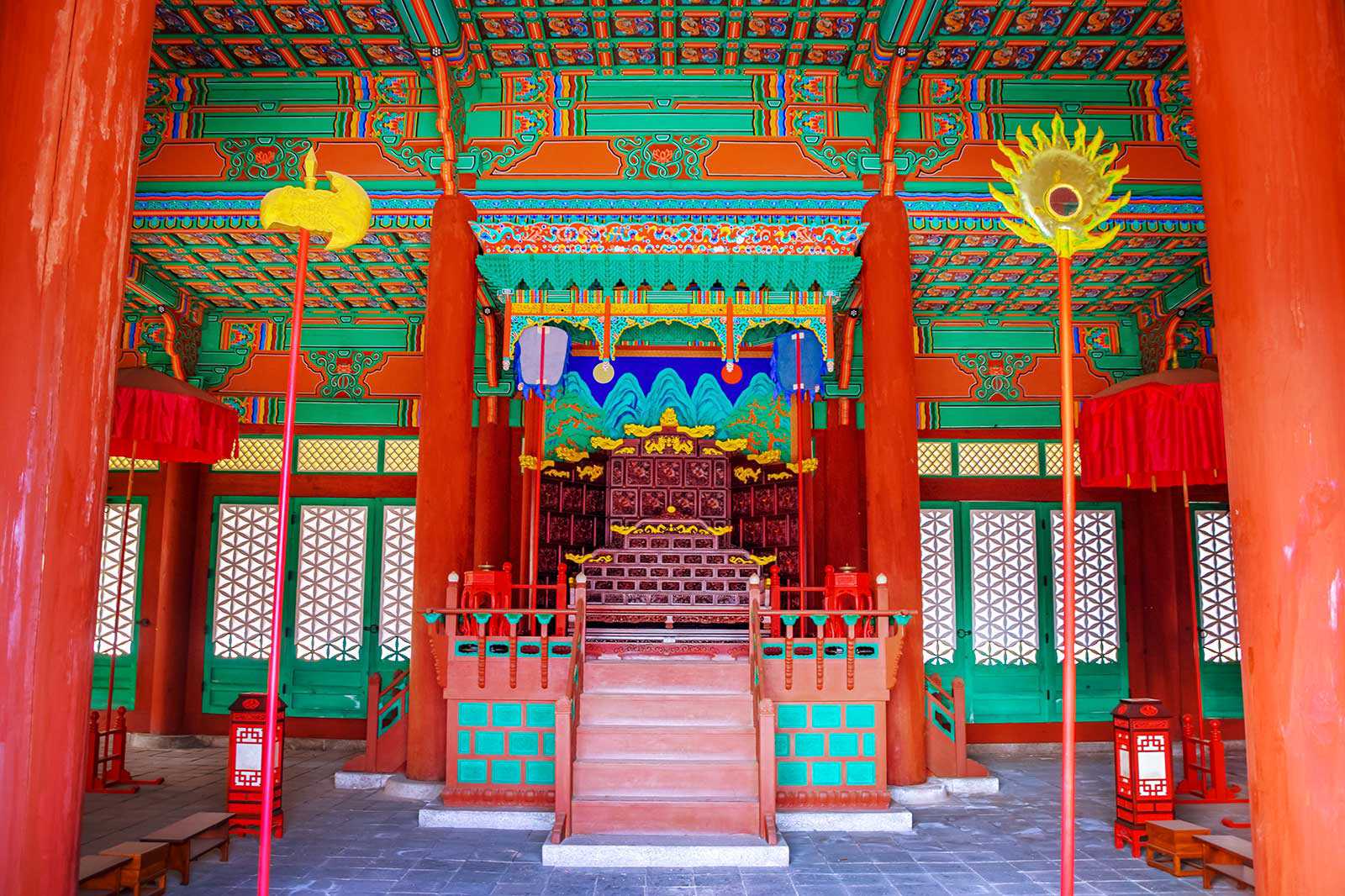
- História
- Foto
Constructed in the 1600s, Gyeonghuigung Palace (Palace of Serene Harmony) served as the king’s secondary residence during the latter Joseon period. Due to 2 fires in the 19th century, the palace is no longer as extensive as it was in its prime, when it featured around 100 buildings. So far a third of the ornate pagoda-style buildings have been restored, but it is still a site to behold and a treat to walk among them on the white stone walkways.
Another scenic spot is Geumcheongyo Bridge near the entrance. The stone bridge runs over the top of the Geumcheon stream. On the other side of the bridge, you’ll find the Seoul Museum of History and Seoul Museum of Art.
Localização: 45 Saemunan-ro, Jongno-gu, Seoul, South Korea
Abre: Tuesday–Sunday from 9 am to 6 pm
Telefone: +82 (0)2-724-0274
Mapa - 6
Donggung Palace and Wolji Pond
The unusual shape of the pond is said to represent the shape of the country at the time

- Casais
- Foto
Wolji – a pond that reflects the moon – is one of the most beautiful locations in Korea. The oval pond is found in Gyeongju National Park in Gyeongju, South Korea. It is an iconic feature of Donggung Palace, a 7th-century royal residence of ancient Silla during the 3 kingdoms era. The pagoda-style royal buildings sit atop 3 small islands in the pond.
For an extraordinary sight, visit Donggung Palace and Wolji Pond at night. With the buildings and garden features lit up, reflecting on the clear water, it makes for a romantic view.
Localização: 102 Wonhwa-ro, Gyeongju-si, Gyeongsangbuk-do, South Korea
Abre: Daily from 9 am to 10 pm
Telefone: +82 (0)54-750-8655
Mapa - 7
Unhyeongung Palace
Historic artifacts and traditional wardrobe is on display here

- Famílias
- Foto
Unhyeongung Palace is one of Seoul’s smaller royal residences. As such, it is more intimate and has become a common wedding venue for Korean couples looking for a traditional ceremony. Walking within the palace, visitors can take in the subdued, tranquil colours of nature as the buildings heavily feature their natural wood structure and cream-coloured walls with trees and water features interspersed throughout.
To see something truly spectacular, visit Unhyeongung Palace in either the spring or autumn when the re-enactment of the royal wedding takes place. King Gojong and Empress Myeongseong were married there in 1866. The ceremony is a colourful affair with actors wearing historically accurate costumes fit for royalty.
Localização: 464 Samil-daero, Jongno-gu, Seoul, South Korea
Abre: Tuesday–Sunday from 9 am to 7 pm
Telefone: +82 (0)2-766-9090
Mapa - 8
Hwaseong Haenggung Palace
The Suwoncheon stream flows through the center of the palace

- História
- Foto
Located in Suwon is Hwaseong Haenggung Palace – a temporary palace where the king would stay when travelling to visit his father’s tomb. About 30 minutes outside of Seoul, it offers a less crowded and more serene experience to visitors. Tours are available, or visitors can explore the large collection of antiques on display at their own pace.
While visiting the palace you can also see the impressive fortress walls equipped with observation towers, cardinal gates and command posts. The stone and fired brick walls have been well-maintained as a UNESCO World Heritage site.
Localização: 825 Jeongjo-ro, Paldal-gu, Suwon-si, Gyeonggi-do, South Korea
Abre: Daily from 9 am to 6 pm
Telefone: +82 (0)31-290-3600
Mapa - 9
Sabigung Palace
Located within Baekje Cultural Land

- História
- Foto
Imagine spending Seollal – the Korean Lunar New Year – in an opulent royal palace like Sabigung Palace. The complex consists of 14 beautifully restored buildings. In the middle, Cheonjeongjeon is a two-story hall where New Year’s rituals and other important events are typically held.
Inside Sabigung Palace, you’ll also find a breath-taking temple called Neungsa. The temple features a five-story wood and bronze pagoda that houses a large golden Buddha statue. It is an almostexact replica of the building as it stood during the Baekje Kingdom.
Localização: 455 Baekjemun-ro, Gyuam-myeon, Buyeo-gun, Chungcheongnam-do, South Korea
Abre: Tuesday–Thursday from 9 am to 6 pm, Friday–Sunday from 9 am to 10 pm
Telefone: +82 (0)41-408-7290
Mapa - 10
Namhansanseong Hanggung Palace
Haenggung means ‘place of temporary stay’

- Grupos
- História
- Foto
Located on a hillside south of Hanam, Namhansenseong Haenggung Palace is a beautiful royal residence nestled against a forest of trees. Haenggung were not meant to be permanent residences, but rather a place Joseon rulers could stay when travelling outside the capital.
When visiting Namhansenseong Palace, you won’t miss the main entrance, Hannamnu Gate, which is a two-story structure characterised by the poetic well-wishing prayers inscribed on the four concrete pillars by a master calligrapher and master engraver. That level of expert and intricate craftsmanship can be seen throughout the rest of the architecture in this mountainside palace.
Localização: 661 Sanseong-ri, Namhansanseong-myeon, Gwangju-si, Gyeonggi-do, South Korea
Abre: Tuesday–Sunday from 10 am to 5 pm
Telefone: +82 (0)31-8008-5155
Mapa

